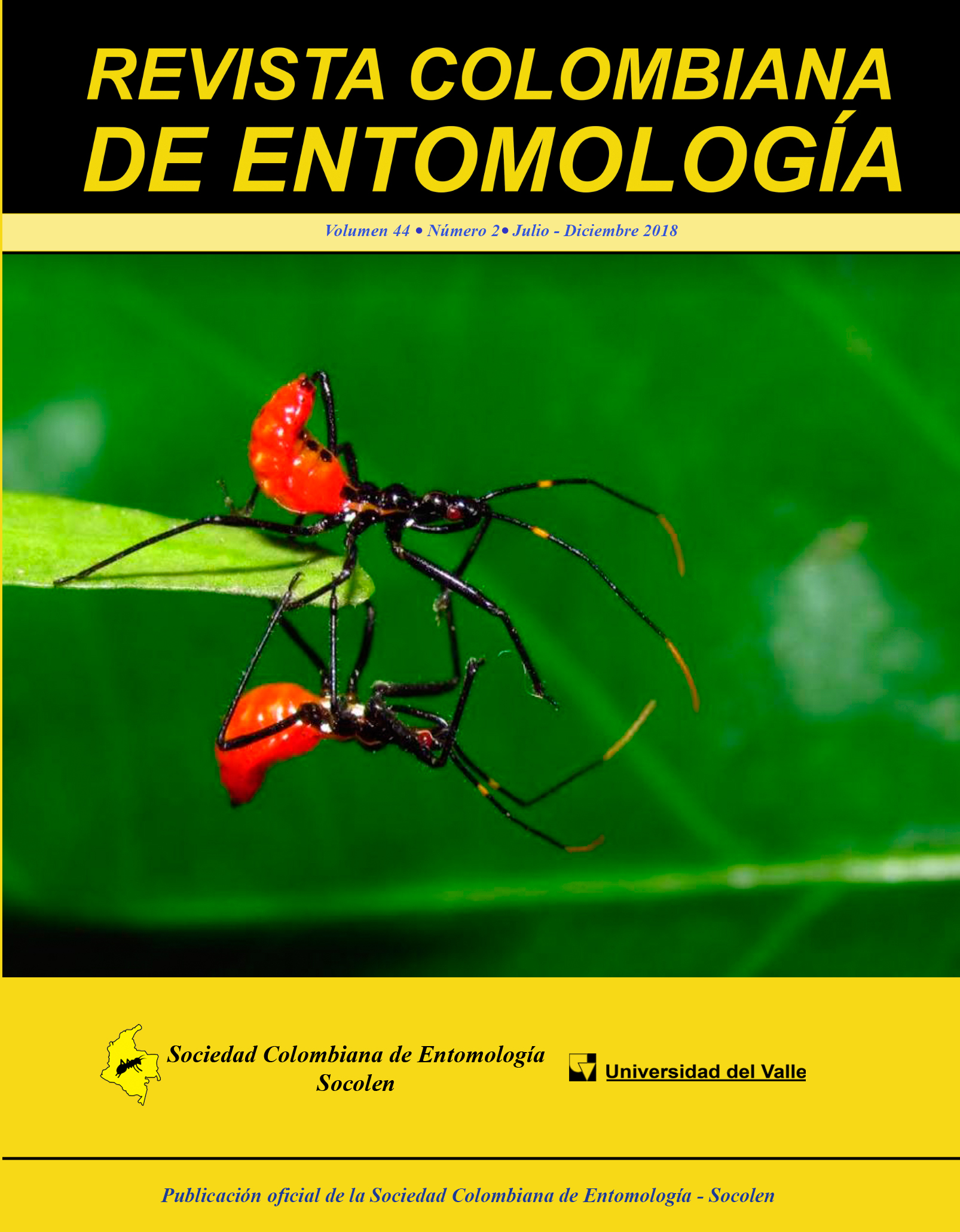Population variation of Rhodnius prolixus (Reduviidae: Triatominae) in Attalea butyracea (Arecaceae) in the Colombian Orinoquia region
Keywords:
Bugs, Casanare, palms, natural forestsMain Article Content
The objective of this study was to determine the population density of Rhodnius prolixus and its developmental stages in natural forests of Attalea butyracea during a hydrological period in flooded savanna ecosystems of the Colombian Orinoquia region. One hundred twenty (120) palms were sampled over a period of one year using live bait traps for Triatomine bugs. Sampling showed that R. prolixus presents a high population density throughout the year, which increases during periods of low rainfall and decreases during the months of greatest precipitation. It was also found that all developmental stages of R. prolixus are presented throughout the year, although there are differences in their representation; showing decreases in density as developmental stages advance. Additionally, infestation, colonization and clustering were observed. The above suggests that the species presents population stability in A. butyracea forests without regard to climatic period, as well as reproductive success; thus individuals have the capacity to disperse and colonize other microhabitats at any time, regardless of climatic condition.
Downloads

This work is licensed under a Creative Commons Attribution-NonCommercial-ShareAlike 4.0 International License.
Authors retain the copyright on their work and are responsible for the ideas expressed in them. Once a manuscript is approved for publication, authors are asked for a publication license for the term of legal protection, for all territories that allows the use, dissemination and disclosure of the same.

